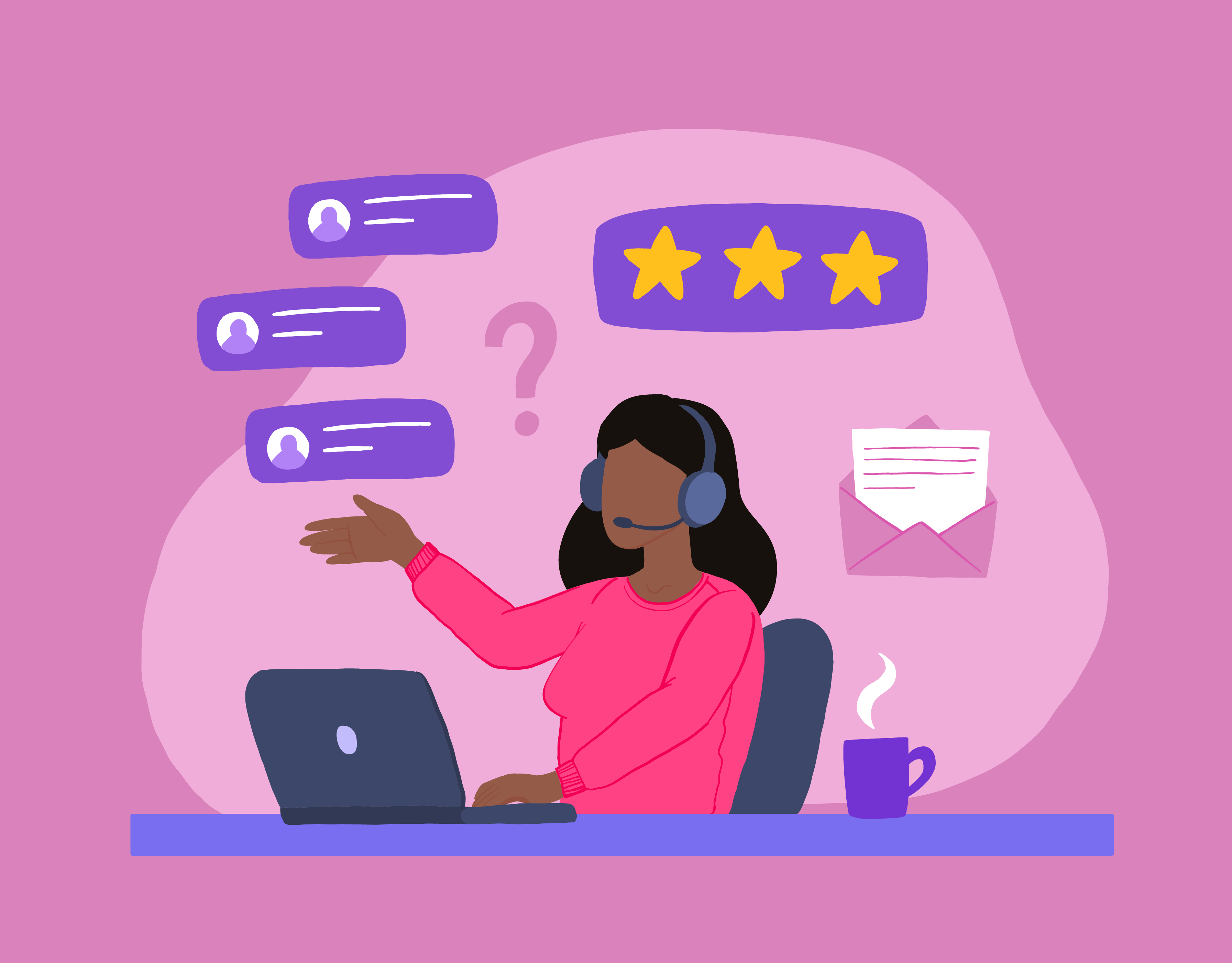How to Improve Patient Communication in Healthcare
by Nicole Robinson | Published On March 1, 2024 | Last Updated September 3, 2024

Discover how advanced digital solutions are transforming patient communication in healthcare, ensuring privacy and addressing diverse needs effectively.
In the healthcare sector, effective patient communication stands as a cornerstone of quality care. With the rise of digital platforms, modern call center solutions are redefining how healthcare professionals engage with patients, offering more than just convenience.
Modern call centers provide a pathway to improved health outcomes. In an era where 82% of patients prioritize quality customer service in choosing healthcare providers, the impact of these technologies on digital patient engagement is profound and far-reaching.
Enhancing Patient Engagement with Integrated Solutions

Enhancing patient engagement through contact center integrations in healthcare involves leveraging diverse communication tools to improve care and support. Up to 62% of patients highlight the significance of engagement and communication.
Tools such as AI chatbots, telehealth services, messaging platforms, and digital patient intake systems offer a unified and efficient approach to managing patient care.
Benefits of Integrated Solutions
Integrating third-party tools with your contact center allows your organization to combine the best of multiple systems into a single streamlined solution. Doing so offers many benefits, such as:
- Improved Convenience – AI-driven appointment scheduling systems enable patients to conveniently book, reschedule, or cancel appointments, enhancing accessibility and reducing wait times.
- Continuity of Care – Automated post-appointment follow-ups ensure continuity of care by sending reminders and personalized care instructions through various channels like SMS, emails, or patient portals. This not only ensures adherence to treatment plans but also provides timely healthcare advice.
- Swift Communication – Integrated solutions facilitate swift communication through the use of efficiency-boosting features. For example, screen pops to patient information systems allow for healthcare representatives to save time on manually looking up caller details. This allows for improved speed when triaging and connecting patients to appropriate emergency services or care providers.
These technological advancements significantly enhance patient-provider interactions, improving overall healthcare delivery.
Telehealth and Call Centers
 Telehealth generally refers to the use of digital communication technologies to access and manage health care services remotely. Therefore, integrating a telehealth component into your cloud contact center is a natural choice.
Telehealth generally refers to the use of digital communication technologies to access and manage health care services remotely. Therefore, integrating a telehealth component into your cloud contact center is a natural choice.
Benefits of Telehealth
Integrating telehealth services into your contact center can significantly enhance patient care in a number of ways. The benefits provided by telehealth include:
- Improved Accessibility – Telehealth offers accessible and efficient medical consultations, especially vital for patients with mobility or geographical limitations. If a patient is unable to get to a health center in person, telehealth may be the only way they can receive the care they need.
- Reduced Costs – In addition to providing access to care for patients who may not otherwise have it, telehealth also reduces the costs of accessing care. Offering telehealth services can be more cost-effective for providers than traditional care, which is in turn reflected in the cost to patients. Patients can save even more by accessing care from home rather than paying for transportation to a health center.
- Increased Operational Efficiency – With telehealth, healthcare providers are able to support more patients than traditional providers with the same number of resources. According to the National Center for Biotechnology Information, telehealth agencies report a more efficient patient-to-nurse ratio of 15:1 compared to 11:1 in non-telehealth agencies, highlighting the cost-effectiveness and efficiency of telehealth in nursing.
- Increased Scalability of Services – In traditional healthcare settings, expanding operations requires not only increases in staff, but increased investments in facilities, materials, and more. Telehealth requires fewer additional investments for expansion in comparison, making it a more scalable option.
These benefits demonstrate the potential that telehealth call centers have to reshape healthcare into a more resilient, accessible, and patient-focused system.
AI-Driven Advancements in Patient Communication
Effective Effective communication in healthcare is being transformed by AI-driven advancements. For example, AI can enhance patient interactions by analyzing communication patterns and offering tailored feedback.
These advancements not only significantly boost patient satisfaction but also greatly improve the training and skills of healthcare professionals.
Benefits of AI-Driven Advancements
AI's ability to understand complex interactions in telehealth call centers marks a pivotal shift in healthcare communication strategies, offering a more nuanced understanding of patient needs. Here are some of the benefits offered by AI in patient communications:
- Efficient Audit and Feedback – AI enhances healthcare communication by efficiently auditing interactions and providing feedback in real time. It interprets both spoken words and non-verbal cues, like tone and pauses. This leads to a better understanding and response to patients' emotional states. For instance, AI-driven sentiment analysis tools can gauge emotions accurately, improving interactions. By accurately interpreting emotions and nuances in communication, AI-driven tools enable healthcare providers to adjust their approach in real time, leading to more empathetic, effective, and personalized patient care.
- Encoding Communication Complexity – AI now encodes communication as effectively as humans, capturing verbal and non-verbal elements. It analyzes prosody, energy, and intonation in speech, offering deep insights into patients' emotions. Studies have shown AI to be highly reliable in interpreting these nuances, which is vital for understanding patient needs.
- Positive Impact on Patient Satisfaction - AI's role in communication has been linked to improved patient satisfaction. AI helps identify key factors that enhance the patient experience, like empathetic language usage by healthcare providers. For example, research suggests that AI-enhanced communication strategies can lead to a measurable increase in patient satisfaction levels.
- Training and Practical Application – AI is instrumental in training healthcare professionals and providing real-time feedback in simulations. It offers diverse training scenarios through AI avatars, although it's most effective when combined with human-led training. This hybrid approach ensures comprehensive skill development in communication.
Navigating Challenges in Digital Patient Engagement
Two primary challenges in digital patient engagement include maintaining patient privacy and effectively handling the diverse needs of different patients.
To ensure high-quality patient care, call centers must adopt strategies that respect patient confidentiality while catering to a wide range of health concerns and preferences.
To overcome these challenges, ensure to align with these 4 best practices.
- Upholding Patient Privacy: Patient privacy is paramount, particularly with the increase in digital data handling. Call centers must ensure compliance with laws like HIPAA and employ robust cybersecurity measures. Regular staff training on privacy protocols and encrypted communication channels are essential steps.
- Addressing Diverse Patient Needs: Patients have varied health needs and communication preferences. Call centers should implement omnichannel communication methods to cater to this diversity, offering services via phone, video, text, and other digital platforms. Tailoring communication to individual patient requirements, including language support and accessibility features for those with disabilities, is critical.
- Staying Updated with Technology: Call centers should continuously update their technology to improve patient interaction and data management. Investing in AI-driven tools for personalized patient communication and predictive analytics can enhance the efficiency of patient care.
- Feedback and Continuous Improvement: Regularly soliciting and analyzing patient feedback helps in identifying areas for improvement. Implementing changes based on this feedback ensures that the call center evolves to meet patient expectations effectively.
Conclusion
In modern healthcare communication, the integration of advanced digital solutions is indispensable. ComputerTalk's ice platform, a Microsoft Teams native contact center solution, exemplifies this integration by offering a seamless blend of advanced IVR and ACD functionality with omnichannel capabilities.
This approach addresses the challenges of digital patient engagement and sets new standards in patient care. Embracing such innovative solutions is the way forward for healthcare providers aiming to enhance patient experience management and operational efficiency.
Learn more about how you can use such advanced communication technologies to improve healthcare services.
More from our blog
 If you've ever reached out to a business and experienced long wait times as a customer, you know how annoying and frustrating it can be.
If you've ever reached out to a business and experienced long wait times as a customer, you know how annoying and frustrating it can be.
 Discover how call center solutions revolutionize student engagement and enrollment in education.
Discover how call center solutions revolutionize student engagement and enrollment in education.
 Enabling multi-contact handling in your contact center can be a great way to quickly boost your contact center’s service capacity without investing any extra funds, installing extra software, or hiring more agents.
Enabling multi-contact handling in your contact center can be a great way to quickly boost your contact center’s service capacity without investing any extra funds, installing extra software, or hiring more agents.

